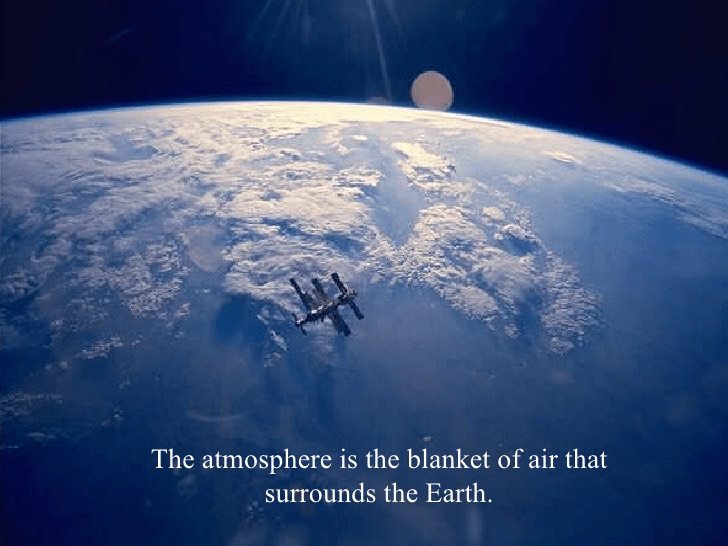NCERT Solutions for Class 9 Science - Natural Resources
| Table of contents |

|
| Page No. 193 |

|
| Page No. 194 |

|
| Page No. 196 |

|
| Page No. 201 |

|
| Exercises |

|
Page No. 193
Q1. How is our atmosphere different from the atmosphere on Venus and Mars?
Ans: Our atmosphere consists of a mixture of many gases like oxygen, nitrogen, carbon dioxide and water vapour which are life-supporting whereas the atmosphere of Venus and Mars contains 95-97% of carbon dioxide and life-supporting gases are not present.
Q2. How does the atmosphere act as a blanket?
Ans: The atmosphere prevents the sudden increase in temperature during the daylight hours and it slows down the escape of heat into outer space during the night. This is because air is a bad conductor of heat and our atmosphere mainly contains air. Thus, the atmosphere mainly keeps the average temperature of the Earth fairly steady.

Q3. What causes winds?
Ans: Winds are caused due to unequal heating of atmospheric air in different regions of the Earth. This phenomenon can be easily seen near the coastal regions during the daytime. The air above the land gets heated faster and starts rising. As this air rises, a region of low pressure is created and air over the sea moves into this area of low pressure. These air movements from one region to another result in winds.
Q4. How are clouds formed?
Ans: When water bodies are heated during the day then a large amount of water evaporates and goes into the air. Some amount of water vapour also gets into the atmosphere because of various biological activities. The air gets heated and rises up carrying the water vapour with it. The air expands on rising and cools which causes the water vapour in the air to condense in the form of tiny droplets. These water droplets get bigger and form clouds.
Q5. List any three human activities that you think would lead to air pollution.
Ans: Human activities that would lead to air pollution are:
- Excessive use and burning of fossil fuels like coal and petroleum.
- Deforestation, which would decrease the amount of CO2.
- Smoke from industries and automobiles.
Page No. 194
Q1. Why do organisms need water?
Ans: Organisms need water to carry out the following activities:
- All cellular processes in an organism take place in a water medium.
- Water acts as a universal solvent and helps in transporting substances from one part of the body to another in a dissolved form.
- Water is also required by organisms for many of their activities such as drinking, cooking, agriculture, transportation, production of hydel power, etc.
Q2. What is the major source of fresh water in the city/town/village where you live?
Ans: The major source of fresh water in the city I live in the underground water which is drawn out by tube wells and at household level by hand pumps. Also, huge tanks have been built by the municipal department from where it is supplied to households through a network of pipelines. Apart from that, the rivers flowing in the nearby areas and ponds also serve as a source of freshwater.
Q3. Do you know about any activity which may be polluting this water source?
Ans: Dumping of sewage and wastes from factories and households into these water bodies pollute this water source. Moreover, washing clothes and bathing at river shore also pollutes water
Page No. 196
Q1. How is soil formed?
Ans: The following factors help in the formation of soil.
Sun: Rays of the sun gradually heat the rocks and they expand during the daytime. During the night, the rocks cool and contract, uneven expansion and contraction of rocks develop cracks.
Water: Water helps in the formation of soil in two ways:
- The cracks formed due to the heat of the Sun are filled with water. This water on freezing widens the gap and loosens the rock into small pieces.
- The running water in rivers wears away hard rocks over long periods of time. Fast flowing water carries small stone pieces and due to rubbing with other rocks they further break down into smaller pieces.
Wind: Strong wind erodes down rocks and also carries sand from one place to another.
Living organisms: Living organisms also help in the process of soil formation. Lichens grow on rock surfaces. While growing, they release certain substances that convert the rocks into powdery form and make a thin soil layer. Other small plants like moss grow on this surface and Lliey cause Lite rock to break further.
Q2. What is soil erosion?
Ans: It is the removal and thinning of the fertile topsoil from a region due to climate and physical processes, such as high rainfall, wind, etc.
Q3. What are the methods of preventing or reducing soil erosion?
Ans: The various methods for preventing and reducing soil erosion are:
- Preventing excessive grazing.
- Planting more and more trees, as the roots of the trees hold the soil in place.
- Contour ploughing.
- Keeping the vegetation cover on the ground to reduce the effect of wind and water.
Page No. 201
Q1. What are the different states in which water is found during the water cycle?
Ans: During the water cycle, water is found in all three states, i.e., solid (ice, snow, hail or sleet), liquid and gaseous (water vapours).
Q2. Name two biologically important compounds that contain both oxygen and nitrogen.
Ans: Proteins and Nucleic acid are biologically important compounds containing both oxygen and nitrogen.
Q3. List any three human activities which would lead to an increase in the carbon dioxide content of the air.
Ans: The three human activities leading to an increase in the carbon dioxide content of air are:
- Burning of fossil fuel such as petrol, diesel and coal in various activities like transportation and industrial processes.
- Burning of wood and charcoal for heating, cooking, etc.
- Deforestation reduces the green plant and tree population and utilization of atmospheric CO2 during photosynthesis.
Q4. What is the greenhouse effect?
Ans: The increase in the percentage of the gases in the atmosphere which prevents the escape of heat from the surface of the Earth, which thus causes the average temperature to increase worldwide is called the greenhouse effect.
Q5. What are the forms of oxygen found in the atmosphere?
Ans: In the atmosphere, oxygen is found in two forms:
- Diatomic molecules having two oxygen atoms (O2), and
- Triatomic molecules having three oxygen atoms (O3) that are found in the upper reaches of the atmosphere.
Exercises
Q1. Why is atmosphere essential for life?
Ans: Atmosphere is essential for life because of the following reasons:
- It acts as a blanket and keeps the average temperature of the Earth fairly steady by preventing a sudden increase in temperature during the day and slowing down the escape of heat into outer space during the night.
- It contains all the gases which are essential for sustaining life on the Earth.
- Ozone layer present in the atmosphere prevents harmful UV rays from reaching the Earth.
- Winds are generated due to the movement of air present in the atmosphere, and rain and rainfall patterns are decided by these winds.
- Water cycle is not possible without the atmosphere.
Q2. Why is water essential for life?
Ans: The Human body contains 60%-70% of water. All the substances are transported from one part of the body to the other in a dissolved form. Almost all the cellular processes take place in a water medium. In fact, all the reactions that take place within our body occur between substances that are dissolved in water. Hence, water is essential for life.
Q3. How are living organisms dependent on the soil? Are organisms that live in water totally independent of soil as a resource?
Ans: Living organisms are dependent on the soil in the following ways:
- All the plants (even aquatic), on which almost all the organisms depend directly or indirectly for food, grow in the soil, which provides them with nutrients and water for development.
- Soil also supports the very existence of forests, which provide us with wood, building material, fibre, medicinal plants. Forests are also a natural habitat for a number of animal species.
- A number of insects and animals make their homes in the soil.
The organisms that live in water are not totally independent of soil as a resource. The mineral nutrients are present in -water in the dissolved form. But their recycling takes place with the help of decomposers that are present in the soil. Water bodies like rivers get the supply of minerals from the soil.
Q4. You have seen weather reports on television and in newspapers. How do you think we are able to predict the weather?
Ans: Weather can be predicted by studying wind patterns that decide rainfall patterns. It also shows areas of low pressure and high pressure. In India, rains are mostly brought by southwest or northeast monsoons. The weather forecast predicted by the meteorological department on TV provides vital information to farmers, fishermen and also saves lives from national disasters.
Q5. We know that many human activities lead to increasing levels of pollution of the air, water-bodies and soil. Do you think that isolating these activities to specific and limited areas would help in reducing pollution?
Ans: Yes, isolating these activities to specific and limited areas would help in reducing pollution, example: industries set up in isolated areas will not pollute the air, soil and contaminate water used for agricultural and domestic purposes and thus not harm living beings.
Q6. Write a note on how forests influence the quality of our air, soil and water resources?
Ans: Forests influence the quality of our air, soil and water resources in the following ways:
- Carbon dioxide: Oxygen balance in the atmosphere: Forests have a large number of trees, shrubs and herbs. They take in CO2 and give out O2 during photosynthesis in daylight. Thus, oxygen is consumed during combustion and also by respiration of organisms is replenished by forests.
- Prevention of soil erosion: Forest trees and other plant roots bind the soil particles They form a vegetation cover over the fertile topsoil. Thus, they prevent the removal of topsoil and consequently soil erosion.
- Replenishment of water resources: Forest trees are large in number and give out an enormous amount of water during transpiration in the form of water vapour. The water vapour helps in the formation of clouds which on precipitation cause rain. If forests are cut and not replenished, there will be a reduction in rainfall and change in the climate.
|
113 videos|527 docs|217 tests
|
FAQs on NCERT Solutions for Class 9 Science - Natural Resources
| 1. What are natural resources? |  |
| 2. How are natural resources important for human beings? |  |
| 3. What are the challenges in managing natural resources sustainably? |  |
| 4. How can we conserve natural resources? |  |
| 5. What is the role of individuals in conserving natural resources? |  |
















